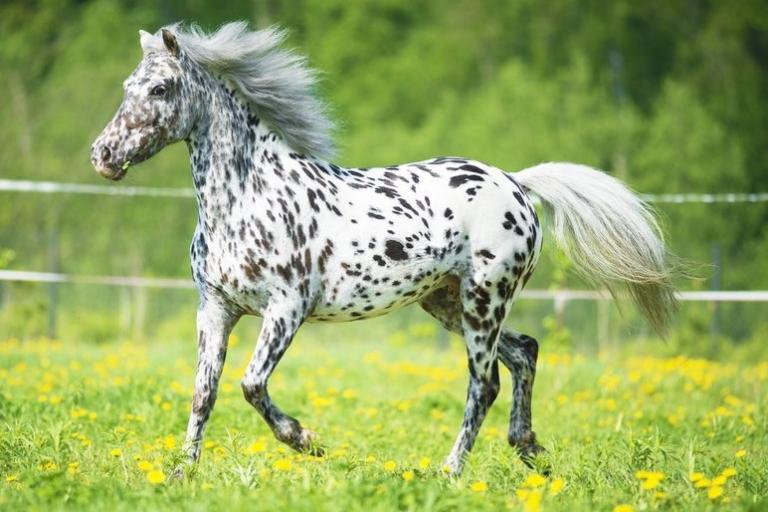Pattern-1 (Coat colour pattern Horse)
The PATN1 gene modifies the Leopard complex and together they lead to a increased amount of white in the pattern of at least 60% of the body, mostly to a full Leopard spotting.
If there is a mutation in the PATN1 gene but no Leopard complex, the PATN1 gene has no effect on the coat colour and the horse is a carrier for the mutation without being spotted itself.
Genetic Test: available in Shop
General Information
- PATN1 is the first identified gene that modifies the Leopard Spotting Complex.
- Pattern-1 in combination with the Leopard Spotting Complex (LP) → at birth the foal will show an increased amount of white in its pattern (min. 60%).
- Pattern-1 without the Leopard Complex → no phenotypic effects on coat colour.
- Horses may be carriers for this variant without showing any pattern themselves.
Test Information
Locus Information: PATN-Locus
This test detects the change of a single basepair in the non-coding region of the RFWD3 gene (PATN1 region).
Test in Shop
Genotype and Lab Report
Genotype
n/n = Horses without the Leopard Complex and without PATN1
Usual coat colour.
PATN1 = Horses with PATN1 but without the Leopard Complex
Usual coat colour, no spotting. When breeding to horses that carry Leopard gene but have little white themselves, the offspring can then show a surprising amount of white if the PATN1 mutation has been passed on.
LP/n or LP/LP = Horses with the Leopard Complex without PATN1
Spotting pattern with a usual amount of white (< 60%). E.G. white blankets or roan like markings.
LP/n + PATN1 = PATN1 with one copy of the Leopard Complex variant
Spotting pattern with an unusal amount of white (> 60%) at birth.
LP/LP + PATN1 = PATN1 with two copies of the Leopard Complex variant
Leopard phenotype (full pattern) and Few Spots.
Appearance
Literature
Holl, H.M., Brooks, S.A., Archer, S., Brown, K., Malvick, J., Penedo, M.C.T., Bellone, R.R.: Variant in the RFWD3 gene associated with PATN1, a modifier of leopard complex spotting. Animal Genetics, 11/2015, Pubmed reference: 26568529. Doi: 10.1111/age.12375.
Further information is available at Online Mendelian Inheritance in Animals.


